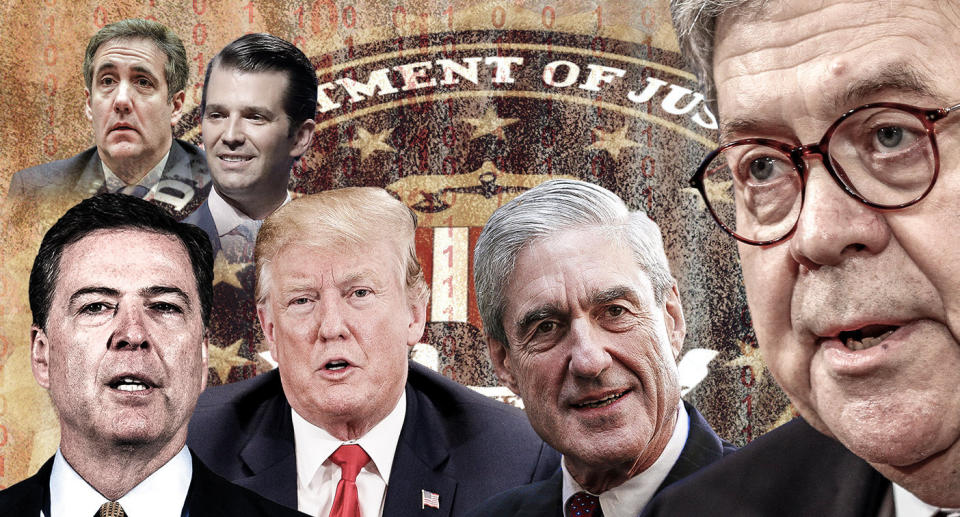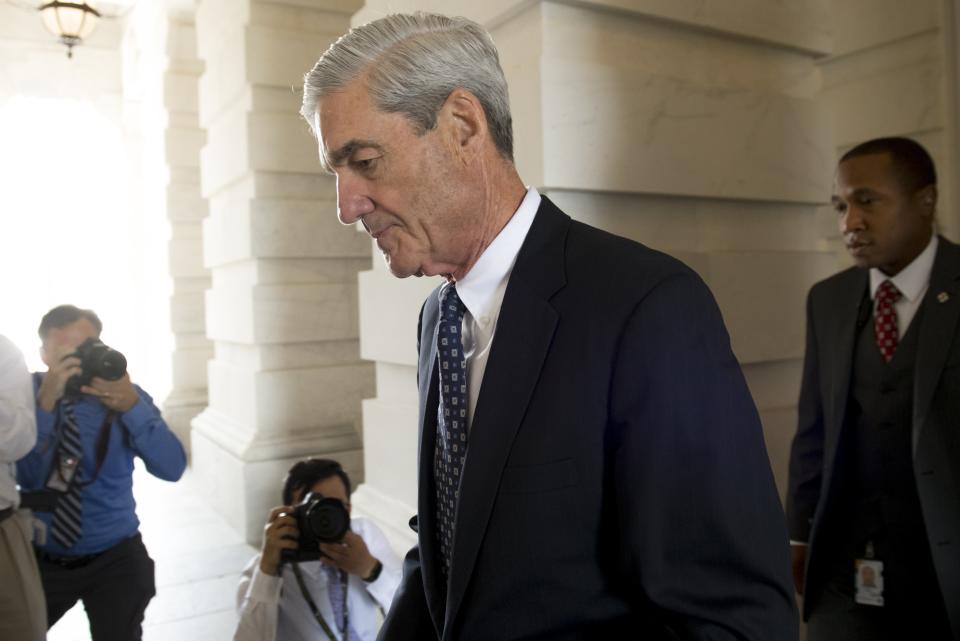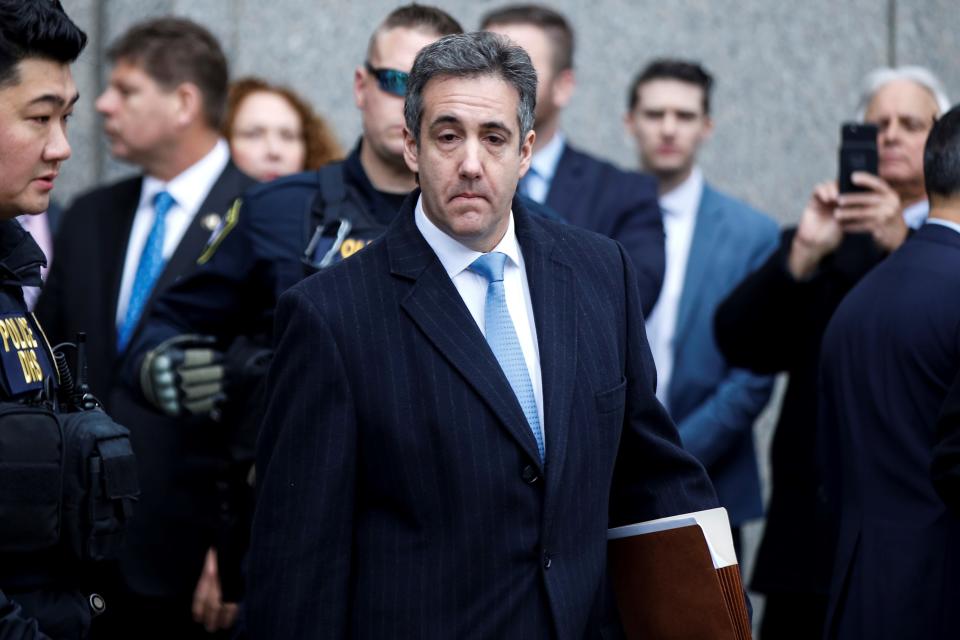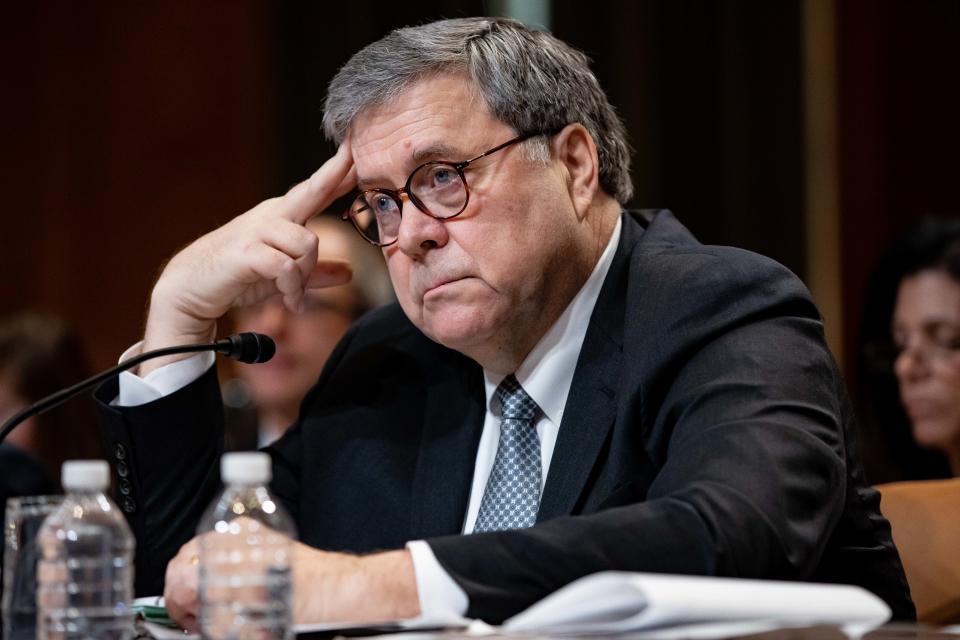Mueller report: How we got here and where we're going
The Mueller report is almost here. The 448-page document will cover the two parts of special counsel Robert Mueller’s investigation: Russian interference with the 2016 election and possible collusion by President Trump’s campaign; and possible obstruction of justice by the president.
But before the redacted report is released, following Attorney General William Barr’s Thursday-morning press conference, here are the moments that brought us to the Mueller report:
‘Russia, if you’re listening’ and the 2016 election

Months before election night, Russian hackers worked to steal emails and documents from Hillary Clinton’s presidential campaign and the Democratic National Committee. Former FBI Director James Comey, who led the probe into Clinton’s email use, said the then secretary of state was "extremely careless" in handling classified information.
By July, as the Democratic and Republican parties were solidifying their nominations, those stolen emails were published by WikiLeaks. Thousands of emails that Clinton’s lawyers deemed personal were deleted from her files and have never surfaced.
Days after Trump at a July 2016 news conference said, “Russia, if you’re listening, I hope you’re able to find the 30,000 emails that are missing,” the FBI quietly opened an investigation, Operation Crossfire Hurricane, into connections between Trump’s campaign and Russia.
After Trump won, President Barack Obama ordered an intelligence-community assessment into Russian meddling.

The Steele dossier
Before Trump was sworn in to office, a 35-page dossier alleging cooperation between Russia and the Trump campaign was leaked to the media and published by BuzzFeed. The unverified dossier was compiled by former British spy Christopher Steele and became one of the starting points of Mueller’s investigation.
It was reportedly disseminated by Sen. John McCain. However, recently unsealed court documents showed that an associate of McCain’s, former State Department diplomat David Kramer, was the one who shared copies of the dossier with BuzzFeed and other media outlets.
Kramer testified he only was briefed on the dossier by a former British diplomat on Nov. 19, 2016, nearly two weeks after Election Day. McCain had also been briefed and then in the following weeks gave the reports alleging conspiracy between Trump’s campaign and the Russian government to former FBI Director James Comey.
But before this brief and the election, Comey had opened a counterintelligence investigation based on a previous tip about the Russian email hack. It came from Australian officials who, around the time of the first leaks, informed their U.S. counterparts that George Papadopoulos, the foreign policy adviser for Trump’s campaign, informally told them that the Russians had political dirt on Clinton.
Comey fired...
On May 9, 2017, not long after Comey confirmed an investigation into the 2016 election, he was fired by Trump. He later testified before the Senate Intelligence Committee that the newly sworn-in president told him, “I need loyalty.”
Trump himself told NBC correspondent Lester Holt that he fired the FBI director because of “this Russia thing.”
Comey said Trump urged him to stop investigations into his national security adviser Michael Flynn, who had been asked about his contacts with Russia and resigned, before becoming one of the first cooperators in the probe.
...and Mueller moves in
After Comey, then came Mueller, who started his investigation in May 2017. The former FBI director was chosen to lead the probe into Russian interference and potential collusion with Trump associates. Mueller’s objective, outlined in a memo from Deputy Attorney General Rod Rosenstein, was to find connections — collusion — between Trump’s campaign and the Russian government and to investigate “related matters” including possible obstruction of the investigation.

Trump decried the investigation as a "witch hunt" and a "hoax” as it began looking into his business, his associates and his actions while in office.
First charges announced...
On Oct. 30, 2017, Trump’s former campaign chairman, Paul Manafort, and his business partner as well former top adviser to Trump Rick Gates were charged: Manafort for conspiracy and money laundering, Gates for financial fraud and lying to the FBI.
...with more to follow
After Manafort and Gates, Flynn, who’d served less than a month as national security adviser, in December 2017 pleaded guilty to “willfully and knowingly” making “false, fictitious and fraudulent statements" to the FBI about conversations with Russia's ambassador.
The Russian troll farm
In February 2018, Mueller in a 37-page indictment also brought charges against Russian intelligence agents who engaged in cyberattacks starting in 2014 and continuing through the 2016 election. Thirteen individuals and three companies connected to the Internet Research Agency, also known as the Russian troll farm, were charged with conducting “information warfare against the United States.”
The president’s men
In the following months, more Trump associates were swept into the probe.
Papadopoulos, Trump’s former foreign policy adviser for his presidential campaign, was sentenced to 14 days in prison for lying to the FBI about his contacts with the Russian government.
Michael Cohen, Trump’s former attorney, also pleaded guilty to lying to Congress about negotiations during the 2016 campaign to build a Trump Tower in Moscow, supporting Trump’s claims that he had no business dealings with Russia. Separately, Cohen was indicted by the U.S. attorney in Manhattan on charges related to hush-money payoffs associated with Trump’s personal life before he became president.

The president’s son and son-in-law
Trump’s eldest son, Donald Trump Jr., was questioned by Mueller’s team about a meeting at Trump Tower, along with Paul Manafort and Trump’s son-in-law Jared Kushner, to get “dirt” on Clinton from a Russian lawyer with connections to Russian intelligence. The White House put out a statement claiming the meeting was about a dispute over Americans being allowed to adopt Russian children. There is no evidence in public that the meeting led to any specific cooperation.
Barr confirmed as new AG
After Trump’s Attorney General Jeff Sessions, who’d recused himself from overseeing the probe into Russian interference, resigned at Trump’s request, the president nominated William Barr, a former Republican attorney general, to replace him.
Michael Cohen breaks
Less than a month before the investigation would end, Cohen testified publicly for the first time before the House Oversight Committee. He called his former boss a “racist,” a “conman” and a “cheat.”
Mueller ends investigation
On March 22, after 23 months by 40 FBI agents, 500 search warrants, 500 witnesses and 2,800 subpoenas, Mueller sent the confidential report to Barr, who two days later released a summary of the report, saying the probe found no conspiracy and that Mueller drew no conclusions about possible obstruction, finding the evidence equivocal. Barr said he decided not to pursue charges. No other indictments have been handed up.
However, Barr pointed out that "the Special Counsel states that ‘while this report does not conclude that the President committed a crime, it also does not exonerate him.’"
Trump’s victory lap
Nonetheless, the president took Barr’s summary as “complete and total exoneration.”
Barr testimony
Democrats, skeptical of Barr’s four-page summary of the 448-page report, requested Barr to testify before Congress about his principal conclusions of the report and to deliver the full, unredacted version of it to lawmakers and the American people.
During his testimony, Barr said agents engaged in “spying” on Trump’s 2016 campaign during their investigation. He then backed off this claim.

Report to be released
A redacted version of the report is expected to be published on the special counsel’s website. It will not be as comprehensive and detailed as the infamous Starr report on the investigation of then-President Bill Clinton. Material covering four areas will be blacked out, including information that is relevant to a grand jury, that the intelligence community finds will reveal sources and methods, that would interfere with ongoing prosecutions or that would implicate the privacy of "peripheral players” who haven’t been charged.
What’s next?
The House Judiciary Committee plans to call Mueller to testify, presumably to ask why no obstruction charges were brought against Trump.
Meanwhile, Barr has vowed to investigate the origin of the FBI’s counterintelligence investigation.
As for Trump, he still faces congressional investigations into alleged obstruction of justice, corruption and abuse of power by his administration.
_____
More coverage of the Mueller report from Yahoo News:
Trump sought to obstruct Mueller — but White House aides wouldn’t do it
Sarah Sanders invented story about FBI agents’ reaction to Comey firing
Mueller report: Trump’s reaction to Russia investigation: 'I'm f***ed'
Trump as Mueller report is released: 'I'm having a good day'
Barr: '10 episodes' in Mueller report detailing possible Trump obstruction
Mueller report: Trump asked aides to help find Clinton's 'missing' emails
Trump celebrates Mueller report with another 'Game of Thrones' meme
In his report, Mueller invites Congress to investigate Trump obstruction



